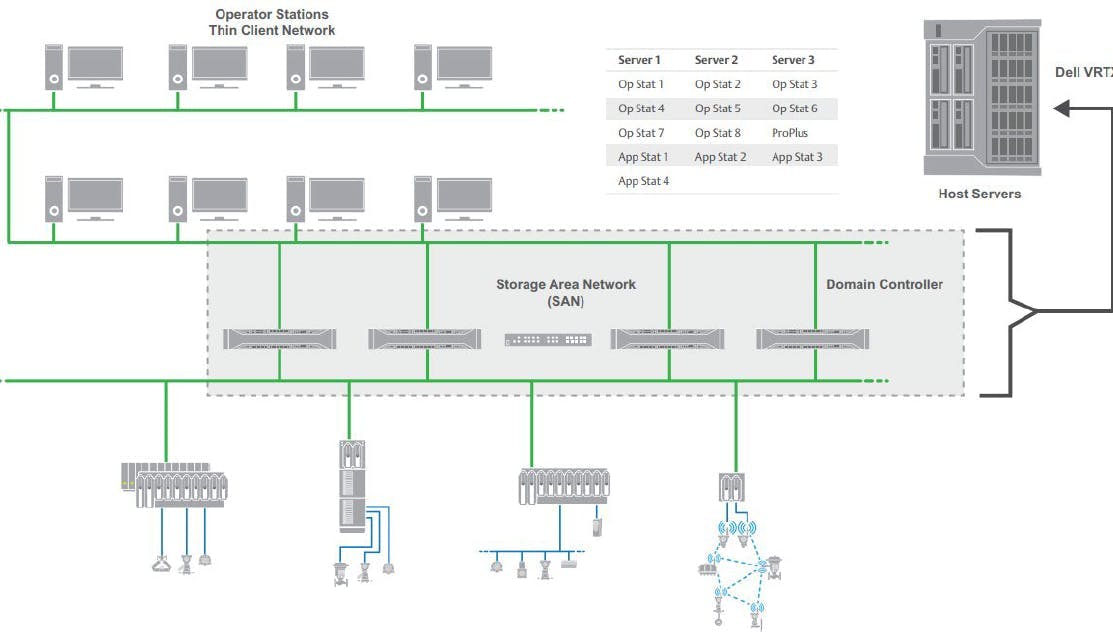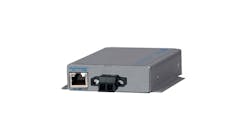Once IIoT establishes its basic network functions and proves their reliability, its software and virtual capabilities can begin to take over.
“IIoT used to be mainly about connectivity and Internet protocol (IP), but now connectivity and even cyber-secure connectivity are just expected, and Ethernet and Wi-Fi are enabling all kinds of new software apps,” says Claudio Fayad, technology VP for systems and software at Emerson. “Users still want to tie into their processes and plants, and always-on connectivity is freeing them to think more about digital transformation, virtualization, and real-time applications and advantages of artificial intelligence (AI), which can enable new levels of data analysis and process optimization. IIoT just needs a common foundation, language and context, so its users can coexist and build interoperability on top. So far, this role has been filed by OPC UA, Profinet, HART-IP, MQTT and other protocols.”
Fayad reports that giving IIoT a common foundation with more standardized physical media and connection layers will enable better data access and contextualization closer to operations, and let users optimize their devices and processes with applications in the field, on the edge, on-premises, at the business level, or in the cloud. “A solid foundation and structure will let IIoT make users aware of problems more quickly,” explains Fayad. “This will also enable the operators to keep plants running closer to their ideal capacity with smaller and more flexible adjustments.”
For example, Inter Pipeline Ltd.’s two-year-old Heartland Polymers petrochemical complex in Fort Saskatchewan, Alberta, is the first integrated propane dehydrogenation (PDH) and polypropylene (PP) production facility in North America. It uses low-carbon process technologies and locally sourced propane to produce and ship by rail about 525,000 tonnes of low-cost polypropylene pellets per year. The complex’s three integrated, operational units include a 102-megawatt (MW) cogeneration unit and central utility block (CUB), PDH unit that turns propane into feedstock, and PP unit that makes polymer resins. However, to meet growing production demands, Heartland recently had to add more teams, and expand its DCS to add temporary workstations despite space limits in its control building.
Heartland and Emerson solved this problem by:
- Using spare system virtualization capacity in the complex’s DeltaV DCS;
- Expanding its thin-client network to provide more workstations;
- Acquiring thin clients from spare IT inventory, and relying on Emerson for spare testing hardware;
- Repurposing an existing telecom, fiber-optic network, and extending the thin-client network outside the control building; and
- Employing virtualization to centralize support for console and workstation management, flexibly switch workstations between zones, and quickly add new workstations quickly with no downtime.
Heartland also virtualized the system architecture of the three zones in its DeltaV, version 14.3.1, DCS. This included 18 nodes in PDH, 21 nodes in PP production, and 13 nodes in the CUB. This mainly consisted of inserting storage area network (SAN) units and a domain controller between the plant-floor devices and the operator stations on the thin-client network, and then having the SANs and domain controller report to a Dell VRTX host server (Figure 1).
Heartland reports that virtualizing spare DCS capacity and adding thin clients let it quickly add or remove workstations; change virtual machine configurations on the fly; centralize support for DeltaV Virtual Studio software; keep DeltaV’s database safer during network and power outages; manage multiple workstations; scale up capabilities faster; reduce and minimize hardware failure risk; increase safety and security; and rapidly restore to project design.
Meanwhile, its business results included no delays in the complex’s pre-commissioning and commissioning schedule; no lost time for setting up additional testing hardware, no interferences with operations due to separate locations for commissioning and operation; achieved a partial plant startup during commissioning; and met COVID-19 protocols requirements. Finally, Heartland also prevented a potential production slowdown of 1.5 Kilo tonnes per day, and avoided costs of $2.25 million CAD ($1.65 million USD) per day.
Similarly, Fayad adds that consistent connectivity brought by IIoT lets users further digitalize, virtualize, and take advantage of more recently developed tools, such as Docker software containers, REpresentational state transfer (RESTful) application program interfaces (API), and MQTT publish-subscribe communications protocol. “Profibus, HART and OPC are historically local protocols that originally didn’t route through Ethernet. Today’s users need more routable protocols from the IT world, such as AMQP and MQTT aided by RESTful APIs, which can handle and secure larger volumes of data,” adds Fayad. “This isn’t ripping and replacing. It’s just adding better connections that can move more information, more frequently, and provide better context for better decisions, efficiency, optimization and profit.”






